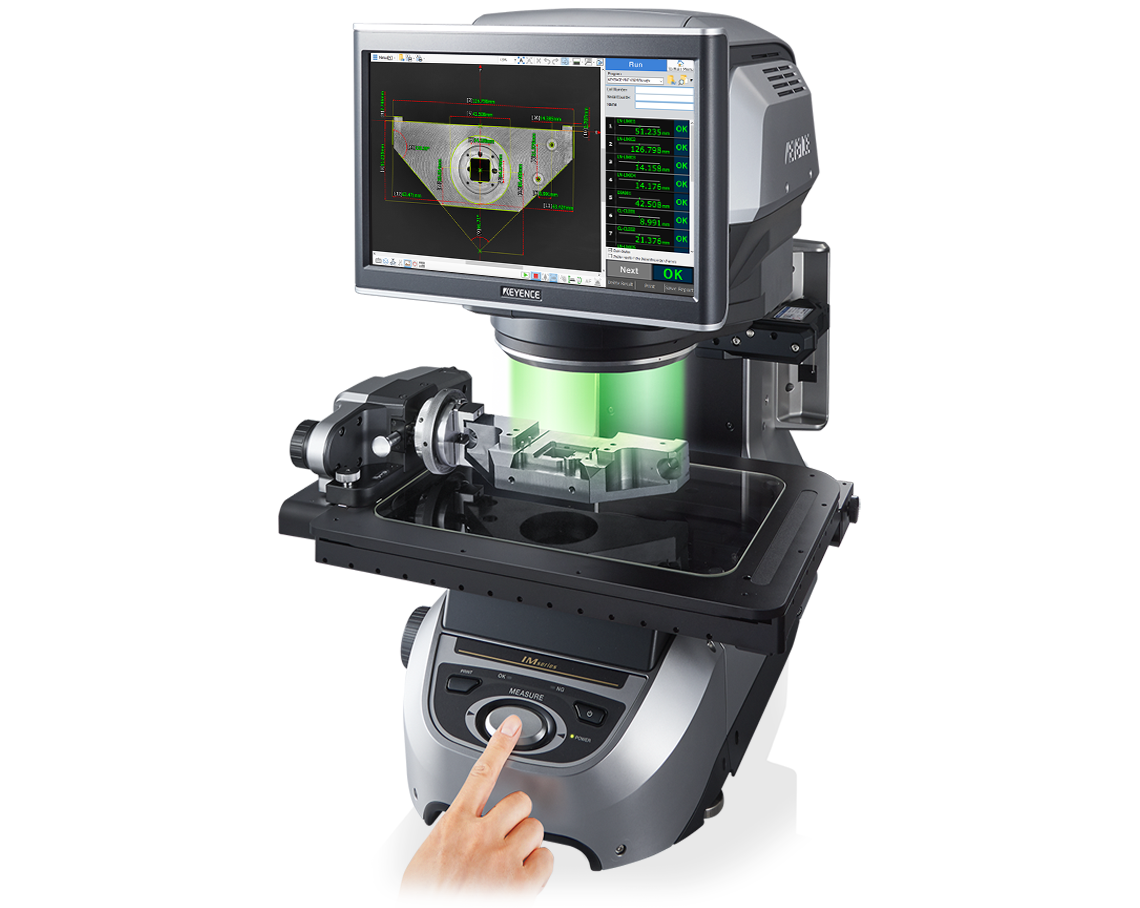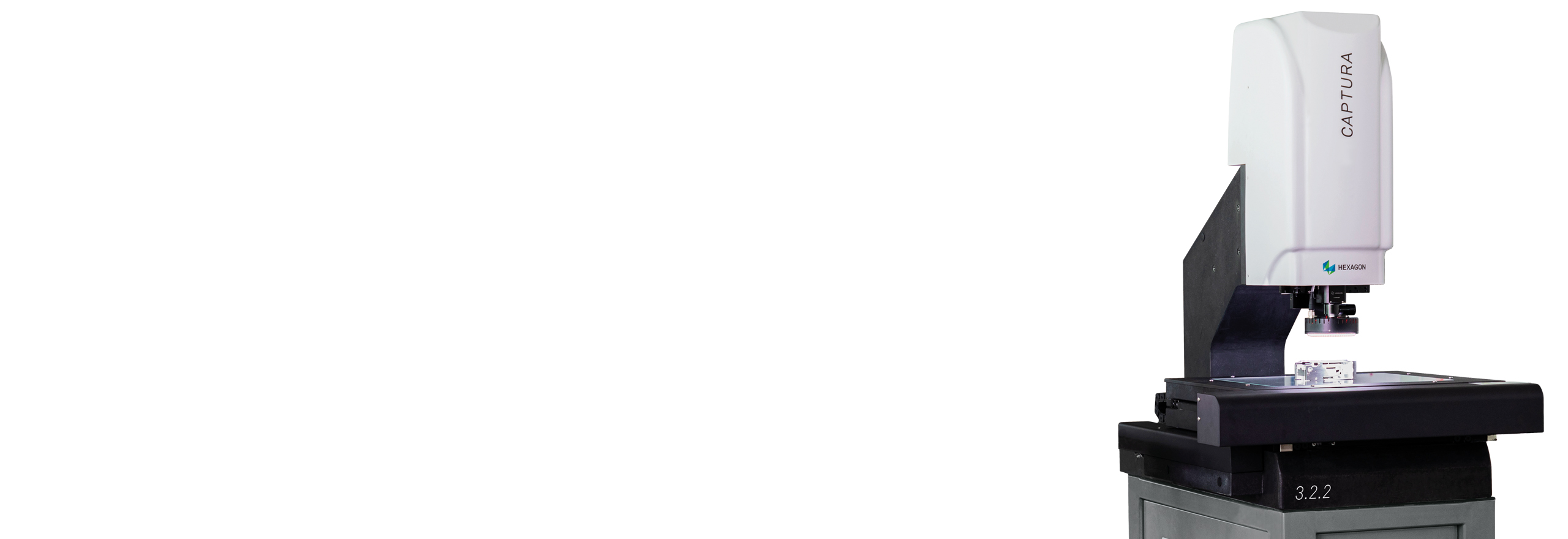Integrating your MES with an optical measurement system for continuous quality checks
Integrating your MES with an optical measurement system for continuous quality checks
Blog Article
The Function of Optical Dimension Solutions beforehand Assessment Strategies
Optical dimension systems have actually transformed assessment, bringing a level of accuracy that was once inconceivable. You may be stunned to discover how these technologies, based upon basic concepts like reflection and disturbance, are applied across various industries. Their non-contact abilities not just boost precision however additionally enhance procedures. As you explore better, you'll find just how these systems are shaping the future of dimension and quality control.
The Development of Metrology: A Historical Point Of View
As you discover the history of assessment, you'll find that its development mirrors mankind's pursuit for precision and standardization. From old human beings making use of body components as systems of dimension to the growth of standard weights and steps, each step reveals our wish for accuracy. The Egyptians built the pyramids making use of specific dimensions, while the Romans advanced engineering with their advanced measuring tools.
During the Renaissance, clinical innovations shifted the emphasis toward a lot more empirical methods, leading the way for modern-day metrology. The introduction of the metric system in the late 18th century marked a significant landmark, establishing universal requirements. Throughout the 20th century, technological developments even more changed assessment, allowing extremely accurate measurements in numerous fields.
Today, assessment continues to progress, incorporating digital innovation and automation. This background highlights not just the value of dimension however additionally our ruthless pursuit of improving accuracy and consistency in our progressively intricate world.
Principles of Optical Dimension Equipments
Understanding the principles behind optical measurement systems is crucial for accurate lead to metrology. You'll wish to think about basic optical concepts, measurement accuracy factors, and efficient system calibration methods. Each of these aspects plays an essential function in ensuring your dimensions are precise and trustworthy.
Basic Optical Concepts
While checking out optical measurement systems, you'll run into essential optical principles that develop the backbone of precise information purchase. Light behaves in foreseeable methods, and understanding these habits-- like reflection, refraction, and diffraction-- is vital for reliable measurements. By grasping these concepts, you'll be geared up to utilize optical technologies properly, paving the method for innovations in assessment and guaranteeing your measurements are both trustworthy and repeatable.
Dimension Accuracy Variables
To attain high dimension accuracy in optical systems, a number of elements come into play, affecting the dependability of your results. High-quality lenses and detectors lower aberrations and sound, ensuring your dimensions are precise. By addressing these factors, you can boost the general performance of your optical dimension systems, leading to more exact and reliable outcomes in your width applications.
System Calibration Methods
Attaining high dimension precision is just component of the formula; correct system calibration techniques are equally important in optical measurement systems. To guarantee your system delivers reputable results, you must consistently calibrate it using conventional recommendation products. Begin by changing the optical elements, like lenses and mirrors, to lessen organized mistakes. Next, utilize well-known dimensions to confirm the system's outcome and make required adjustments. It's also essential to represent environmental elements-- temperature and moisture can impact measurements. Implement a regular calibration routine to maintain consistency gradually. Lastly, document all calibration procedures and outcomes; this will certainly aid you track efficiency and deal with any drift in precision. With these methods, you'll boost the dependability of your optical measurement system.
Secret Technologies Behind Optical Dimension
Optical measurement systems depend on several essential modern technologies that enhance accuracy and performance in metrology. One necessary technology is interferometry, which utilizes the disturbance of light waves to gauge small displacements and surface area abnormalities with extreme precision. You'll likewise locate laser scanning systems, which capture comprehensive 3D information of things promptly, making them invaluable for dimensional evaluation.
In Addition, CCD and CMOS sensing units play a substantial function in transforming light into electric signals, enabling high-resolution imaging and precise measurements. Advanced algorithms for image processing additionally enhance dimension precision by assessing information in actual time, straining sound and boosting attributes.
Ultimately, optical fiber give adaptability and the capacity to gauge in hard settings while preserving signal stability. By leveraging these innovations, you can accomplish exceptional cause your metrology jobs, ensuring that your dimensions are both accurate and reputable.
Applications of Optical Measurement in Industry
As industries significantly require precision and efficiency, the applications of optical dimension systems have become vital throughout different industries. In manufacturing, these systems aid you keep an eye on dimensions and resistances in real-time, ensuring quality assurance without time-consuming hands-on checks. In the auto market, optical measurements help in straightening components with precision, enhancing safety and efficiency.
In electronics, you're making use of optical methods to inspect minute features on circuit card, finding problems that can cause failures. The aerospace market take advantage of non-destructive testing strategies, enabling you to analyze materials and parts without compromising their stability.
Optical dimension likewise plays a vital function in fabrics, guaranteeing textile dimensions satisfy precise specifications. optical measurement. With their ability to supply high-resolution data rapidly, these systems encourage you to make informed decisions, enhance procedures, and ultimately drive advancement throughout your industry
Enhancing Accuracy and Effectiveness in Dimensions
When you consider boosting precision in dimensions, precision in your measurement methods is essential. By improving these processes, you can accomplish quicker outcomes without compromising top quality. Allow's discover how adopting advanced optical measurement systems can elevate both accuracy and efficiency in your work.
Precision in Measurement Methods
Precision in measurement methods is vital for accomplishing trusted cause width, specifically because small discrepancies can lead to significant mistakes. By making use of innovative optical dimension systems, you can improve the accuracy of your measurements. Get More Info These systems provide high-resolution information that aid you identify also the tiniest variations in dimensions. When you take on these modern technologies, you lessen unpredictabilities and improve repeatability in your processes. On top of that, accurate dimensions enable you to maintain quality assurance, ensuring that items meet rigorous specs. This not only enhances your credibility yet likewise enhances client fulfillment. Buying accuracy measurement tools inevitably causes increased performance, decreased waste, and maximized production cycles. Welcoming these methods will certainly transform your strategy to metrology, generating remarkable outcomes.
Enhancing Dimension Processes
To improve precision and performance in dimensions, improving your dimension procedures is vital. Start by taking on optical measurement systems that offer real-time information, minimizing the moment invested in hand-operated recording. These systems often integrate perfectly with existing software application, enabling you to automate information collection and analysis.
Next, standardize your measurement protocols. By executing consistent procedures, you minimize variability and improve repeatability. Don't forget to on a regular basis calibrate your equipment to guarantee its accuracy.

The Effect of Optical Dimension on R & D
As researchers endeavor to press the borders of technology, optical measurement systems have actually come to be essential tools in the development process. These systems provide you with precise, real-time information that boosts your ability to assess intricate materials and structures. In numerous areas, from biotechnology to aerospace, you depend on optical measurements to enhance styles and enhance item performance.

With high-resolution imaging and non-contact techniques, you can minimize example disruption, permitting more precise results. This capacity to capture minute information accelerates your R&D cycle, allowing you iterate layouts promptly and successfully. In addition, optical measurement fosters cooperation throughout techniques, as the information created is typically conveniently interpretable and shareable.
Inevitably, integrating optical dimension systems right into your research study not only improves productivity yet likewise strengthens your understanding of the you can look here phenomena you research. By leveraging these innovative strategies, you're better geared up to introduce and remain ahead in a competitive landscape.
Future Trends in Optical Dimension Solutions
With the rapid development of technology, you're most likely to see considerable shifts in optical dimension systems that will redefine their application throughout different industries. You'll see an action towards enhanced automation and assimilation of expert system, enabling real-time information evaluation and improved accuracy. Miniaturization is one more trend; portable gadgets will make it possible for measurements in tighter rooms, making them excellent for areas like aerospace and biomedical applications.
Expect to see systems that can operate in difficult atmospheres, offering trusted dimensions in extreme problems. As these modern technologies merge, you'll find that optical measurement systems not only boost precision however additionally improve process, inevitably driving innovation and effectiveness in your tasks.
Frequently Asked Concerns
Just How Do Optical Dimension Solutions Compare to Standard Dimension Techniques?
Optical measurement systems use greater precision and faster results compared to typical methods. You'll locate they record more information points precisely, minimizing human error and raising reliability, making them a recommended choice in various applications.
What Industries Advantage Most From Optical Measurement Equipments?
You'll discover industries such as aerospace, automobile, and electronic devices profit most from optical dimension systems. These sectors depend on specific dimensions to assure quality and performance, improving effectiveness and minimizing prices via innovative modern technology.

Are Optical Dimension Equipments Expensive to Implement?
Optical measurement systems can be visit here pricey to implement, however their accuracy and effectiveness typically validate the cost. Buying such modern technology can lead to substantial long-lasting savings and renovations in quality across numerous applications.
What Abilities Are Required to Operate Optical Dimension Solutions?
To operate optical measurement systems, you'll need solid logical abilities, interest to information, and proficiency in software application tools. Knowledge with optics and an understanding of dimension principles will likewise enhance your efficiency and efficiency.
How Do Ecological Elements Influence Optical Measurements?
Environmental elements like temperature, air, and moisture high quality can misshape optical dimensions. You'll discover variations in precision as a result of light interference or refraction. optical measurement. Maintaining stable conditions is essential for exact and trusted optical measurement results
Final thought
In recap, optical dimension systems are changing width by giving unparalleled accuracy and performance. As you check out future patterns, you'll see exactly how the combination of AI and automation will proceed to boost measurement practices, driving innovation and improving quality control.
Attaining high measurement accuracy is only component of the formula; proper system calibration techniques are similarly important in optical measurement systems.When you think about boosting precision in dimensions, accuracy in your measurement techniques is important. By utilizing innovative optical dimension systems, you can improve the accuracy of your dimensions.To boost precision and efficiency in measurements, streamlining your dimension procedures is necessary. Just How Do Optical Measurement Solutions Contrast to Standard Measurement Techniques?
Report this page